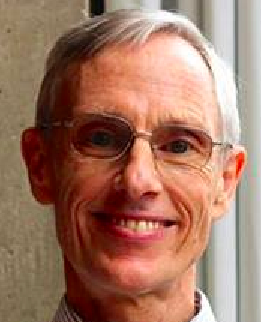24th February 2009, 03:51 pm
I invited Professor McGuire to do this guest column after hearing some inspiring comments from him at our weekly Tuesday Science lunch today:
Teach Process not Material by Professor Morgan McGuire
I’ve been thinking lately that one cannot put enough emphasis on process, as opposed to material. In the sciences this means the methodology that we bring to solving problems. That methodology is usually mathematical or experimental. Moreover, I think process is a universal truth that applies equally well to the humanities, as well as outside academia in industry. Continue reading ‘Teach Process not Material’ »
13th February 2009, 10:29 am
In this guest column, David Thompson (Williams ’11) observes that there are topologies on R of all cardinalities from 2 to  , assuming the Continuum Hypothesis, a result from the first topology tutorial session with his tutorial partner Andrew Lee and me. Continue reading ‘Topologies on R of All Possible Cardinalities’ »
, assuming the Continuum Hypothesis, a result from the first topology tutorial session with his tutorial partner Andrew Lee and me. Continue reading ‘Topologies on R of All Possible Cardinalities’ »
14th January 2009, 09:55 am
Cones provide the simplest singular spaces and models for general singularities. The isoperimetric problem is a good way to explore their geometry. My students, collaborators, and I have a number of related publications (see my webpage), most recently “Isoperimetric balls in cones over tori” (Ann. Glob. Anal. Geom. 2008). Here I want to mention two other interesting cases which turn out to be trivial.
1. The cone over R. Here balls are isoperimetric, because this is the universal cover of the punctured plane, and balls are isoperimetric in the plane, even if multiplicity is allowed.
2. The cone over the line with Gaussian density. Here there are no isoperimetric sets, because you can do better and better by going farther out in the cone with smaller and smaller neighborhoods of +∞ in each slice.
Category:
Math |
Comments Off on Isoperimetric Regions in Cones
14th January 2009, 09:13 am
Abstract: The version of the shortest “Steiner” network problem in which you minimize length plus number of Steiner points has an interesting analog in manifolds with density. Continue reading ‘Networks in Manifolds with Density’ »
11th January 2009, 08:55 am
What is a surface? Different technical definitions serve different purposes. Here we’ll focus on two-dimensional surfaces S in R3 or R4. Continue reading ‘Surfaces, currents, and varifolds’ »
26th December 2008, 10:58 pm
For Christmas my brother got a Flip Camcorder and made this video (click here) starring my mom, her doggie, and me, to Gary Schyman’s “Praan” with apologies to “Where in the World is Matt?”
22nd December 2008, 05:58 pm
Revised to “Five or Six” from “Eight” November 7, 2010.
In response to frequent questions, I now recommend shuffling the bridge deck just five or better six times and then preferably dealing the cards back and forth instead of cyclically. The recent article by Conger and Howald** supersedes the revolutionary 1992 paper of Bayer and Diaconis* in showing how the randomness of a shuffled deck is enhanced by dealing out the cards, even more so if the cards are dealt back and forth (West North East South South East North West) instead of the usual repeated cycle (West North East South West North East South). Their following table shows the remaining order after n shuffles for the undealt deck, for the bridge hands dealt cyclically as usual, and for the bridge hands dealt back and forth
n 5 6 7 8 9 10
undealt 92% 61% 33% 17% 8.5% 4.3%
cyclic deal 23% 7% 3% 2% 1%
back&forth 31% 3% 1%
Dealing back and forth has the added advantage of being a bit faster than dealing cyclically as usual. Some questions about the accuracy of the mathematical model remain. Continue reading ‘Five or Six (not Eight) Shuffles’ »
13th December 2008, 07:34 am
Actor Alan Alda appears with mathematician Bob Osserman in a video of a Berkeley Repertory Theatre conversation sponsored by the Mathematical Sciences Research Institute. It is a wonderful conversation between two very intelligent and curious individuals. Here I want to comment on Alda’s implicit, unanswered question:
What is meant by curvature in space-time? Continue reading ‘Alan Alda and Curvature in Space-Time’ »
2nd December 2008, 08:10 pm
25th November 2008, 04:20 pm
My senior seminar on “The Big Questions” asked me for a succinct explanation of Gödel’s Incompleteness Theorem, a radical result which I’m beginning to think is a simple one. Continue reading ‘Gödel’s Incompleteness Theorem’ »
 Welcome to my blog. I also have a blog at the
Welcome to my blog. I also have a blog at the